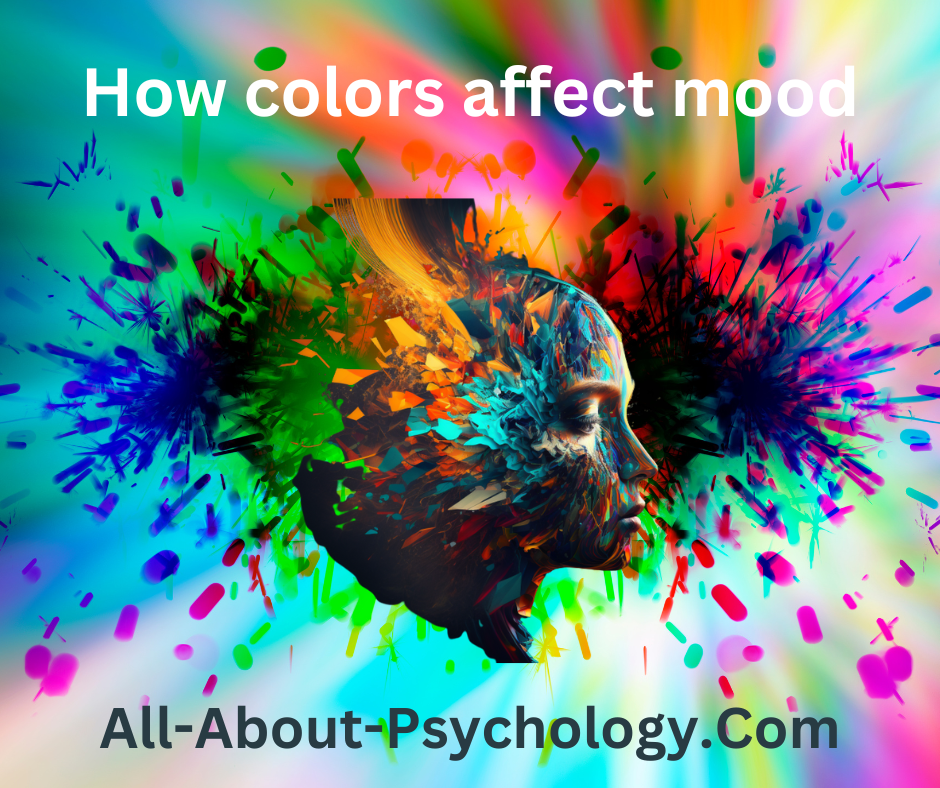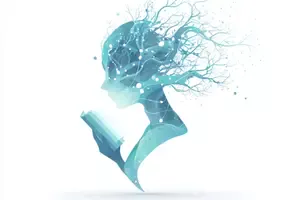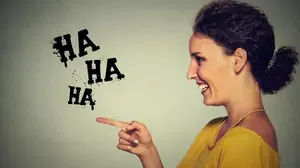How Colors Affect Mood
Classic article from 1945 on how colors affect mood and the mind by Edward Podolsky, M.D.

Some years ago a photographic platemaker, M. M. Lumiere, of Lyons noted that workers in dark rooms lit by red lights were irritable and badtempered. When the same men were removed to green and blue-lit rooms their moods changed instantly. They became more cheerful.
There is now no doubt that colors exert a most profound influence on the mind, and there are many interesting case histories which demonstrate how colors helped pave the way to mental health. There was, for instance, the case of the soldier who had sustained severe shell shock in Flanders. His nervous system became so seriously affected that the sudden closing of a door and an unexpected voice caused nervous prostration. Gradually his mental health also began to fail, and in time he was seized with black fits of depression. It then occurred to the doctors who were treating him that color treatment might prove of benefit.
The soldier was admitted to a hospital and placed in a color room, the governing idea of which was sunlight. The room suggested the open fields, and the color was that of spring. The ceiling was blue, the upper portion of the walls was yellow, and the lower portion light green. The floor covering was of green felt toning with the colors of the walls. The window hangings were of deep yellow, and the artificial light was diffused by means of orange electric bulbs placed around the walls behind a cornice. The patient lived in this room for several days, supplied with light literature and appetizing food. Within a month he had so visibly improved that all signs of nervous irritability had gone.
An almost similar case was that of a young officer who, as a result of the horrors he had passed through, sustained a rather severe shock to his nervous system which assumed the form of acute insomnia. The color scheme of the private ward used in this case was carried out in mauves, blues and greens, all of which have a sedative action. The patient entered the ward in the morning and spent the whole day there under the influence of the color scheme. That night he had his first unbroken and refreshing sleep since the advent of his nervous ailment.
Colors are not only calming in their effect on the mind; they are also distinctly energizing. Red, for instance, is a most stimulating color. Scarlet rooms for lazy boys have been tried with success. There is the case of a young woman who was subjected to very severe periods of melancholia. When this patient felt a fit of depression coming on, she went into the red room and turned on the lights which came from red colored bulbs. The melancholia was effectively dispersed. She then passed into a room the color scheme of which was carried out in yellow and gold, a combination producing a mild stimulation. This brought her back to her normal state of mind.
Many physicians who specialize in the treatment of mental ailments have been particularly interested in how colors affect mood. They have experimented with various color combinations and have brought many interesting facts to light. Dr. Zeller was among the first, some twenty-five years ago, to use colors in the treatment of mental and nervous disorders. He cites the case of two hospitals in Switzerland where eight verandahs were provided, three enclosed with ruby glass, three with violet, one with opal and one with amber, each type of solarium being designed for the treatment of a specific type of mental disease. The results were remarkably good.
In a red pavilion, having red walls, red carpets and red lights a number of melancholic women were placed, and in a comparatively short time their depression was overcome and they became brighter and more contented.
Dr. Porras is another physician who has been using colors with interesting results in the treatment of mental disorders. A man who refused all nourishment and who was considered to be in danger of his life was placed in a red room for twenty-four hours, after which on his own accord he asked for breakfast. A maniacal patient was placed in a blue room and after only one hour showed a marked change for the better.
Colors have a very real effect on the mind. They act very much in the same way as drugs. They may be stimulating or calming. Thus an insane asylum in Illinois uses red to stimulate cases of melancholia. Blue has definitely good results on neurotics. Those whose nerves have been shattered will often find comfort in a room decorated with gaudy checks and stripes of color. These act as a veritable tonic.
Color is coming to play more and more of an important part in the decorative schemes of hospitals devoted to the treatment of mental diseases. Dr. W. R. Dunton, Jr. of Harlem Lodge, Catonville, Indiana, has found that mentally depressed patients require greater stimulation from color than do normal persons.
Dr. S. E. Katz, of the New York State Psychiatric Institute and Hospital, has made a study of the color preferences of the mentally ill. In every group of patients blue was found to be the most pleasing color. Green was a distant second. Red was a close third, with violet, yellow and orange, fourth, fifth and sixth, in order. Green was more favored by inmates who were in for a short duration. Orange and yellow were the least liked by this group and best liked by those who had been in the hospital for three years or more.
Green was better liked by males and red by females. Red, orange and yellow were more pleasing to manic-depressives than to others, and green was most pleasing to those suffering from dementia precox (split personality).
It is well for directors of psychiatric hospitals to take the color preferences of the insane into consideration when decorating their living and sleeping quarters. Colors will play just as important a part in their recovery as will drugs, food and rest.
In choosing the color scheme for those of unsound mind another fact should be taken into consideration. The constant visualization of blankness, no matter what the blankness may be, is disconcerting to the sick mind. Accordingly, while the walls and furnishings of the room may be predominantly of one color this color should be relieved by the introduction of other hues, as in dadoes, friezes and other embellishments that are analogous rather than complementary.
Thus, green may be modified by touches of yellow or blue. Soft yellow, by pale green, pale blue, by pale violet; red by orange or violet; violet by red or blue.
Bright, pure colors should be used sparingly and judiciously, care being taken not to throw the general impression of the room (stimulation or sedation) off balance. Surfaces should be dull rather than shiny, and monotony should be avoided by using different color schemes in the various rooms, or by the device of using a ground color and harmonizing top color, the latter being partially removed when wet by a sponge mottling or by crumpled roll finishing.
Even in milder cases of mental and nervous upset, colors may be used to great advantage. In cases of neurasthenia, yellows, blues and greens are of value. A blue ceiling has often been used with such excellent results in cases of neurasthenia that no other measures were necessary. This gives the patient a sense of space, and combined with the sunlight yellow of the walls dissipates the feeling of oppressive confinement.
A combination of blue and violet has been found beneficial for overactive nerves, especially in insomnia. Sleep is often induced by the judicious use of these soothing colors. Headaches and insomnia are best dealt with by blues, violets and mauves.
Firmament blue is magnetic and astringent. It is also soothing in cases of overwrought nerves. Blue also helps to concentrate. Sunlight yellow is a mental stimulant. Sunlight primrose is less brilliant than sunlight yellow, and may be used in conjunction with the yellow for stimulating effects.
Spring green is a combination of purest blue and yellow, and is a fine mental sedative. Anemone mauve is a mental sedative and it has been used in conjunction with firmament blue in cases of insomnia and nervous headache.
Cardinal red is of value in extreme cases of mental depression. It has definite stimulating properties, not only on the mind, but on other functions of the body. It has been used in the rooms of indolent children and by athletes about to run a race with excellent results. Rose color is a mental recuperative. Yellow will stimulate without exciting, and in conjunction with violet is beneficial in cases of depression, one color being the complement of the other.
Black is a color not necessarily depressing; it is quite useful for toning strong colors. It should therefore always be used in combinations. Alone it is not quite cheering. White is a cheering color which attracts sunlight, but, if used alone, is cold. Combined with red, yellow or orange, it is stimulating.
Brown is restful and warming in quality, but if used alone tends to have a depressing effect. It is very useful in combination with orange, yellow or gold, when it suggests sunlight and counteracts melancholia.
Purple and mauve are sedative, soothing and productive of sleep. They concentrate and are very useful in cases of mental instability. Gold is a bright, cheerful color, useful in convalescence, while gray depresses and suggests cold.
Blue is a color possessing cooling, sedative properties which, to some people, are depressing. If it is used in too great quantities it is capable of producing melancholia, therefore it is useful in reducing cases of excessive mental excitability.
Green possesses cooling properties, which is useful in nervous diseases as it subdues excitability. It acts as an opiate and counteracts the brightness of the sun. It excites the eye less than any other color, even black, and induces repose.
Red is a stimulating color of high standard, which excites and increases the working power of the brain. Too much can disturb the mental balance of delicately poised minds. It disperses melancholia most effectively.
When discussing the effects of colors on the mind another factor must also be taken into consideration. In the minds of certain people colors suggest definite qualities and characteristics. Colors are symbols and are used in the process of symbolic thinking. From earliest times humanity has thought of colors as symbols and has associated them with emotions and thoughts. Thus, red may stand for action and courage, but it may also stand for anarchy and carnage. For this reason it may evoke desirable reactions in some, but in others, red may suggest blood and destruction and have an adverse effect.
Pure yellow suggests cheerfulness, glory, prosperity and sunlight and in those who have this symbolic evaluation of yellow this color acts as a means of bolstering up the emotions. Yellow also suggests shoddiness, disease (jaundice,, anemia, etc.) and cowardice. In people who have this subconscious evaluation of yellow, this color brings distress and discouragement.
Purple may be the color of royalty, magnificence and heroism. In these instances it is an ennobling tint capable of exerting a very desirable effect. Purple to some people suggests passion, mystery and suffering and to these people is freighted with undesirable -reactions.
Another interesting fact which must be taken into consideration when thinking of colors as a factor in the chejnistry of the emotions is that certain persons are more deeply affected by colors than others. Artists, writers and poets are ordinarily more affected by colors than those whose emotions do not enter very strongly in their daily lives.
Blue always evoked the most pleasant reactions in Lafcadio Hearn, the writer. Says he: “In my own case the sight of vivid blue has always been accompanied by an emotion of vague delight—more or less strong according to the luminous intensity of the color. It was when I beheld it for the first time the grandest vision of blue in the world—the blue of the Gulf Stream; a magical splendor that made me doubt my senses—a flavoring azure that looked as if a million summer skies had been condensed into pure fluid blue for the making of it.” Blue was Hearn’s favorite color, and it always perked his spirits up. It lifted him up emotionally more than any other color.
On the other hand, red was the favorite color of Louisa Fletcher, the poet. For her, red “was the color of Harlequin, the pulse of all things. A deal of red and you have carnival, a little and the heart must skip a beat.” Red was just as emotionally uplifting to Miss Fletcher as blue was to Hearn. This brings up another interesting point in the sexual preferences of colors. Blue is and has always been the favorite color of men, while red has always had the most attraction for women.
Recent Articles
-
Psychology Articles by David Webb
Dec 14, 25 05:05 AM
Discover psychology articles by David Webb, featuring science-based insights into why we think, feel, and behave the way we do. -
Schadenfreude Explained: Why We Enjoy Others’ Missteps
Dec 14, 25 04:54 AM
Schadenfreude explains why we sometimes enjoy others’ misfortunes. Explore the psychology behind this emotion, from social comparison to moral judgment. -
What Is Antifragility? Why It Matters in an Unpredictable World
Dec 11, 25 07:58 AM
Discover what antifragility means, how it differs from resilience, and why small challenges help us grow stronger in an uncertain world.
Please help support this website by visiting the All About Psychology Amazon Store to check out an awesome collection of psychology books, gifts and T-shirts.




